Thesis Capstone 2024

Art by Meredith Newman
Welcome to the Graduate Exhibition and Experience Design Thesis Capstone 2024!
The adjudication of the students' work will take place in person on Dec 13th with
a celebratory Evening Reception 5-7pm.
Exhibition and Experience Design 2024 MA Candidates
Click the green menu button at the top right of this page for more information.
Aian Raquel
Thesis and Project
Dogtown 120: A Retrospective of the Philippine Village at the 1904 St Louis World’s
Fair
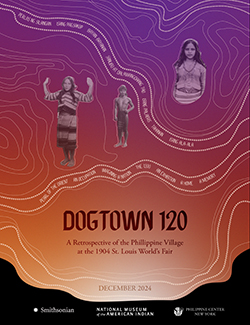
This study explores how evoking wonder in exhibitions transforms engagement with difficult histories and content. By harnessing wonder – a sudden, extraordinary, and personal experience – exhibitions create a state of productive uncertainty, fostering new perspectives, empathy, critical reflection, and active remembering. Through objects, artifacts, and exhibition design elements, this approach makes challenging narratives more resonant and accessible, ultimately catalyzing human flourishing amidst complex societal issues.
Client: Smithsonian and The Philippine Center in New York
Venue: National Museum of the American Indian in New York
Audience: Primary: Filipino-Americans, Native Americans, immigrants
Secondary: History educators and students, audience with interest in social justice
and history
Tertiary: Tourists
Akshata Chitnis
Thesis and Project
Beyond the Book
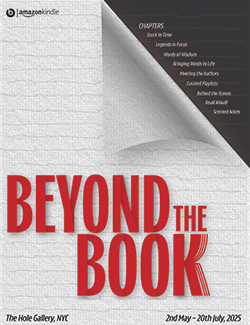
Introverts can feel treated as second-class citizens in society and can be overshadowed by extroverts who typically assume authoritative roles. The world largely thrives on the “Extrovert Ideal,” suggesting that a confident and outgoing way of life is the only path to success. However, the hidden potential and power of introverts are immense. It is crucial to create a space that addresses this issue, highlights the unique perspectives of introverts, and showcases what it is like to be an introvert in a predominantly extroverted world. This would not only be valuable for introverts but also for those who do not identify as introverts, fostering greater understanding and appreciation for different personality types.
Client: Amazon Kindle & Beats By Dre
Venue: The Hole Gallery (Bowery, NYC)
Audience: Primary: Gen Z, millennials, introverts
Secondary: Extroverts (facilitators), book lovers, experience seekers
Tertiary: Tech enthusiasts (professional hobbyists)
Carlos Hernandez
Thesis and Project
COOK x FOOD
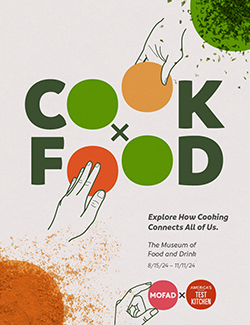
Modern museums are increasingly interested in growing their outreach and social presence in their home communities and beyond. Traveling exhibits have long provided a way for museums to connect with diverse and distant audiences outside of their home communities, however many traveling exhibits are designed primarily with peer institutions in mind. There is an opportunity to grow engagement with potential host organizations outside of the typical museum hierarchy and introduce museum content into more facets of our social infrastructure. Locally engaged organizations such as community centers, non-profits, universities, and libraries have rich insights and networks in their home communities and can use traveling exhibitions as a catalyst for developing unique, place-based experiences that enhance the visiting content. By incorporating community centered design practices and encouraging co-creation with traveling exhibit content, designers can adapt traveling exhibitions to be more impactful and accessible to diverse hosting organizations and their communities.
Client: The Museum of Food and Drink, America’s Test Kitchen
Venue: The Museum of Food and Drink
Audience: Primary: Adults interested in food and cooking
Secondary: Students groups high school and up
Tertiary: Tourists
Claire Caverly
Thesis and Project
Women’s Words & Old Wives Tales
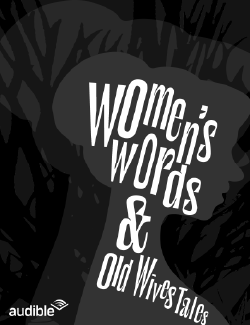
In the field of experience design, “Immersive” has become a term applied to a wide range of projects with little clarity or definition. What does it mean to immerse? To plunge, or to cover entirely. Immersive environments require that visitors are completely absorbed into the stories we as institutions are telling, and in order to embody these stories, visitors need context. Context is provided through multidimensional design that engages all five senses in an accessible and recognizable manner and allows visitors an innate familiarity of the story, an invitation to participate, and a sense of inclusion.
Client: Audible
Venue: Daryl Roth Theatre
Audience: Primary: Women, ages 12+, experience seekers
Secondary: Explorers, all genders 12+
Honey Jernquist
Thesis and Project
Inclining: Aging with Energy
Is Aging a Skill?
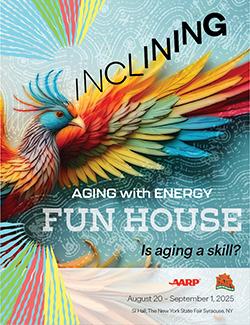
By seeking the imagination - what we each imagine as our imaginations, by recognizing it as an embodied experience, by considering imagination as a practice, by appreciating the universal impact of imagination on our lived experiences, we generate cultural health, well-being, and the common good.
Imagination is a skill.
Developing skill requires practice.
Imagination can be practiced.
Imagination makes reality.
Imagination makes culture.
Practicing imagination is practicing reality and culture.
Reality and culture are skills.
Skills require practice.
Client: AARP
Venue: SI Hall, New York State Fair, Syracuse, NY
Audience: Primary: Anyone aware of their own aging
Secondary: Friends/family/tagalongs
Hyunji Lee
Thesis and Project
Shades of Façade
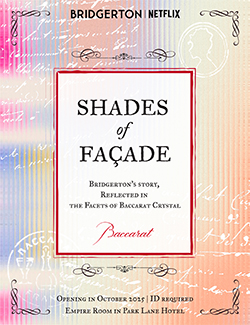
Brand experience profoundly influences customer perception of brand identity and shapes their lasting memories with the brand. The methods of delivering brand experiences have diversified, encompassing spatial designs, digital interactions, and community building. While some brands successfully create rich content around their identity, others fail to provide consistent experiences despite their strong brand presence, leading to consumer dissonance.
This study specifically explores optimizing brand experience through innovative spatial design and a narrative-driven approach to enhance customer engagement and loyalty by drawing them back into physical stores. The goal is to boost brand equity in a way that benefits brands, customers, and the environment. By developing these optimized approaches, I propose a new paradigm for consumer engagement and a strategic path to elevate brand equity in retail stores.
Client: Baccarat / Sponsor: Netflix
Venue: Empire Room in Park Lane Hotel
Audience: Primary: Netflix subscribers, Bridgerton fans, fans of classical aesthetics and classic
luxury
Secondary: Design-conscious consumers exploring high-end lifestyle brands
Tertiary: High-end consumers loyal to Baccarat
Jude Desinor
Thesis and Project
DREAMS: The Ultimate AI
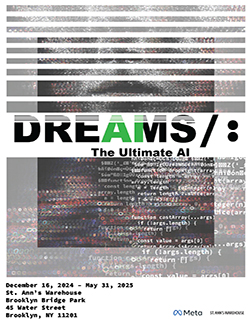
Many exhibitions today are struggling to fully immerse visitors in technological experiences that reflect modern advancements and fall short in making the personal impact that newer generations are yearning for. Through the design of dream scenarios and utilizing advanced artificial intelligence technology, impactful and personalized experiences can be created that fulfill audiences’ desire for technological experiences, personalization, and foster an opportunity to gain self-awareness. Ai generated images are dreamlike, and in the form of curated dream sequences can be used as prompts for visitor introspection that are emotionally stirring and deeply fulfilling.
Client: Meta
Venue: St. Ann's Warehouse
Audience: Primary: Gen Z
Secondary: Young adults, fellow creatives
Tertiary: General population with an interest in dreams
Kellyn Nettles
Thesis and Project
Mikiri: Rituals for Collective Action
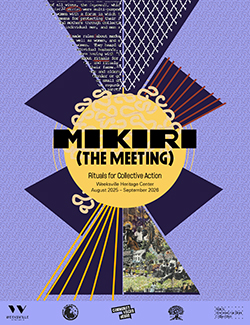
Grassroots liberation organizations are the foundation of change within the U.S. and globally. These groups gain traction in moments of collective trauma, and remain relevant and important sources of local community care, support, and justice-oriented thinking. Collaborations between these groups are often event-centered and rely on the specific expertise of each group. These collaborations provide opportunities for putting theory into practice, bringing communities together to engage the past with the present and future, furthering solidarity amongst groups across generations, cultures, and spiritualities. Utilizing autonomous and participatory design strategies, the role of the exhibition and experience designer becomes integral to bringing these collaborations to life in ways that address knowledge gaps, build in space for disagreement, and give design power to non-trained designers.
Client: Weeksville Heritage Center, Community Voices Heard, For Our Liberation, Interference Archive
Venue: Weeksville Heritage Center
Audience: Primary: Brownsville/Crown Heights public housing residents, families and staff
Secondary: BIPOC Brownsville/Crown Heights community members
Tertiary: Academics, community organizers, and additional allied communities
Meredith Newman
Thesis and Project
What is in a Name?
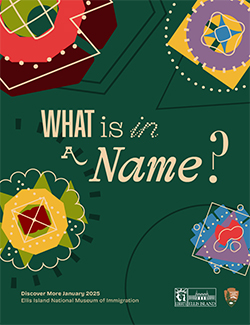
Written content such as exhibit labels and wall text is a crucial part in museum exhibits that can provide clarity, orientation, and accessibility to visitors. However, at its worst, content within museums can be overwhelming, ignored, and intimidating.
The conventional methodology of designing museum text is reminiscent of two dimensional mediums such as books and newspapers. The hierarchy of a main header, sub header, and body copy is reliable, but it can become static and unremarkable to the visitor. By acknowledging the spatial nature of exhibits, exhibit designers have the opportunity to go beyond the traditional two dimensional thinking and take advantage of an exhibit's three dimensions.
With interactive, graphical, or experiential text that responds to the content and exhibit space, exhibit designers are able to enhance the experience of the visitor. The visitor will ultimately encounter content that is easy-to-scan and digest making the information in the exhibit not only more accessible but also more memorable.
Client: The Statue of Liberty – Ellis Island Foundation
Venue: Ellis Island National Museum of Immigration
Audience: Primary: Experience seekers, facilitators
As it is a part of a package with the Statue of Liberty, many groups/families of international
and national tourists come to Ellis Island after visiting the Statue of Liberty. Also
because of the nature of the museum, the younger guests seemed to be at least of reading
age
Secondary: Explorers
Many visitors spent time studiously reading the content and meticulously interacting
with the exhibits.
Tertiary: Professional/hobbyist
With genealogists and official Ellis Island records on the premises, many visitors
have the opportunity to explore that side of their history.
Rob Reuland
Thesis and Project
Leggende Della Pietra
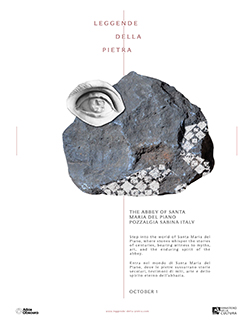
Leggende Della Pietra is a proposed traveling immersive experience of Italy’s lesser-known
historic ruins on behalf of the Italian Ministry of Culture. The first installment
will explore the Abbey of Santa Maria del Piano in the Lazio Region an hour's drive
north of Rome. Through immersive installations, local stories, and artistic reconstructions,
the exhibition reveals how the abbey’s stones—silent witnesses to centuries of faith,
art, and myth—continue to connect the past with the present.The exhibition areas are
prompted by questions that the site provokes including what the space sounded and
looked like, as well as exploring the poetic nature of ruins and the stones they leave
behind exploring the secrets that stones have witnessed as well as the weight of the
past. The goal is to poetically fill in the blanks of the ruin and tie a fil rouge
back in time connecting audiences with the past in an intimate way.
Client: MUBI, Atlas Obscura, Commune Pozzaglia Sabina
Venue: The Ruin of Santa Maria del Piano
Audience: Primary: Local Italians 60 and up seeking entertainment and connection
Secondary: Younger Italians interested in learning more about old times and connecting
with their grandparents and parents in a new way
Tertiary: Foreign travelers looking to learn more about Italy
Saher Sahni
Thesis and Project
"Hautecraft" by House of Khadi
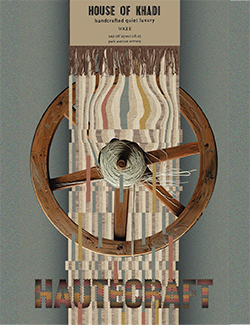
This exhibit seeks to transform the perception of luxury by transcending its traditional associations with excess and extravagance. It centers on the true essence of haute couture—the pinnacle of luxury—characterized by unmatched quality, expert craftsmanship, and lasting durability. The vision is to harness artistic expression to create a luxury lifestyle perceived as not only visually stunning but also sustainable, accessible, and built to endure, heralding a new era in quiet luxury.
Client: KVIC (Khadi and Village Industries Commission (KVIC), sponsored by Vogue
Venue: Park Avenue Armory
Audience: Primary: Creatives from luxury industry
Secondary: Creatives from design institutions
Tertiary: Gen Z enthusiasts
Sakshi Lokhande
Thesis and Project
"Puzzled?"
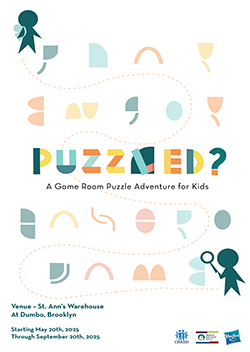
This project explores the perception of exhibition subject matter by children with ADHD through sensory stimuli such as light, sound, touch, smell and color. It also discusses the impact of ADHD on childrens’ decision-making and their ability to enjoy a designed branded experience. My project aims to provide design parameters for an inclusive space that welcomes all children to enjoy intuitive play. This is achieved via a puzzle play project for Hasbro in an escape room environment.
Client: Hasbro, CHADD, American Montessori Society
Venue: St. Ann’s Warehouse
Audience: Primary: Children with ADHD aged 7-10 yrs
Secondary: Parents, facilitators, guardians, siblings, educators
Tertiary: All children aged 7-10 and families
Sarah Agudelo
Thesis and Project
"Voices of Strength"
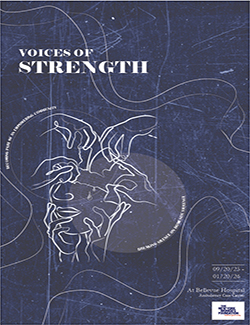
Domestic violence can have profound and lasting effects on individuals, affecting almost every aspect of their lives. Distinguishing the various stages of an abusive relationship can be difficult to recognize due to their layered complexities and subtleties. Understanding these stages can help in recognizing the pattern of abuse and encouraging individuals to seek appropriate support in breaking free from the cycle to find safety and healing.
Client: The New York Women’s Foundation
Venue: The Bellevue Hospital Ambulatory Care Facility
Audience: Primary: Female victims of domestic violence ages 16+ (professional hobbyists)
Secondary: Supporters of victims of domestic violence (facilitators)
Tertiary: General public (explorers)
Sarah Miorelli
Thesis Project
"Natural Neighborhoods"
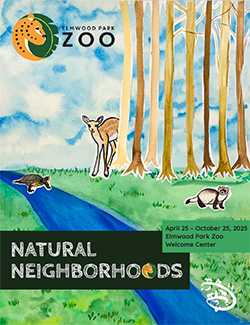
Places such as museums, cultural institutions, zoos, aquariums, and themed entertainment spaces are integral to the human experience and one’s search for knowledge, growth, community, and well-being. Designing these spaces to be accessible for those with unapparent disabilities such as ADHD and autism is a challenge in our field. My project leverages universal design principles in addition to designing for well-being to create more inclusive spaces.
Client: The Walt Disney Company and The Disney Conservation Fund
Venue: The Elmwood Park Zoo
Audience: Primary: Children with ADHD and autism
Secondary: Caregivers and parents
Steven Coward
Thesis and Project
"The River has Teeth; Monsters, Myth and You in the Florida Everglades"
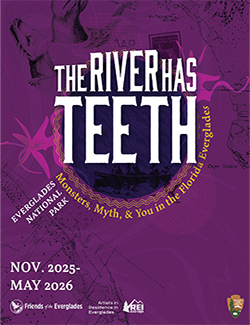
Outdoor wayside exhibits in natural parks provide historical and ecological information
to visitors as they encounter the park landscape. While these exhibits offer site-based
information, they fall short in facilitating a sense of connection and emotional investment
between visitor and place.
As a mediator between visitors and the environment, wayside exhibits can be designed
to reflect both entities through integrative placemaking strategies, enacted through
site-specific engagements, interpretive storytelling, and directed facilitation between
audiences.
Implementing these placemaking strategies can connect visitors to their environment
and cultivate a grounded connection to the park landscape in tandem with the experience.
In doing so, wayside exhibits can provide a sense of place that contributes to a deeper
understanding of local ecological narratives for multi-generational visitors.
Client: Friends of the Everglades, AIRE
Venue: West Lake Trail, Everglades National Park, Florida
Audience: Primary: Multi-generational families
Secondary: Adventurer / campers park visitors (hobbyist, experience seekers)
Tertiary: School groups (age 6-13) with staffed facilitators, educators, etc.